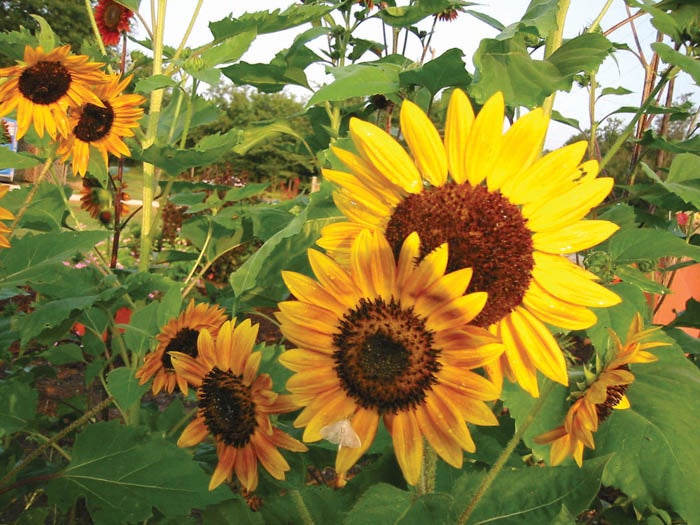Attract more pollinators with orange in the garden
Published 12:00 am Friday, June 9, 2017

- Submitted photo Sunflowers are always a favorite in the garden.
By Amy-Lynn Albertson
Rowan County Extension Director
As a University of Tennessee grad, I should bleed orange. However, I work for N.C. State, so I back the Pack and sing “Rocky Top” quietly. It’s a different conference anyway, right?
Our pollinators love orange in the garden, and so do I. Some of my favorite flowers are orange, gold and yellow.
Coreopsis or tickseed is a terrific bloomer for several months in late spring and summer. It has a bright yellow daisy flower with a maroon center. Coreopsis grows to be 2-3 feet tall with finely divided delicate foliage. This plant prefers full sun and is tolerant of many soil types.
According to Prairie Moon Nursery, “Beekeepers consider all Coreopsis species to be good honey sources.” Coreopsis can be sown directly in early spring. Once established, they will self-seed themselves year after year.
Gaillardia pulchella or Indian blanket flower was given its common name by early settlers since the blooms reminded them of the colorful blankets woven by the Native Americans. These flowers are daisy-shaped with red or maroon petals.
Indian blanket flower is one of our toughest native flowers. It thrives on the coast in the hottest conditions and tolerates poor soils. This plant is an excellent choice for coastal properties, meadows and xeriscaping, as well as butterfly gardens, containers or the flower bed. Indian blanket flower will continue to flower until the first frost and will readily self-seed.
Sunflower is our best known and most beloved garden plant. The sunflower is one of my all-time favorite flowers. The original sunflower from the prairies of the U.S. grows 6 to 10 feet in height. The sunflower is a tough plant that is widely adaptable. However, it does require full sun.
The large-flowered varieties prefer rich, well-fertilized soils. However, with the numerous cultivars available, most any garden can be home to sunflowers. If you allow the seed to ripen on the plants, you will have a botanical bird feeder in the fall for cardinals, blue jays, woodpeckers, grosbeaks, chickadees and other winged friends.
Black-eyed Susan, Rudbeckia sp. is another well-known native flower that is seen in gardens and on roadsides. It often acts as an annual but can surprise the gardener by performing as a short-lived perennial or as a biennial, forming a rosette of leaves the first year and blooming the second year. The flowers are bright yellow with dark brown centers.
The black-eyed Susan leaves and stems are covered with short, stiff hairs, which makes them less appetizing to deer. This plant is drought tolerant once established and is tolerant of most soils. The seeds can be sown directly in the fall or spring. Rudbeckia readily self-seed, and naturalize in the garden, providing beauty for years to come.
On Thursday, June 29, Cooperative Extension and Godley’s Garden Center will host a free pollinator garden workshop. We will explore the world of pollinators and teach you which plants to plant to create a pollinator paradise. The workshop will be from 11 a.m.-1 p.m. at Godley’s, with lunch provided.
Please call 704-216-8970 or go to http://go.ncsu.edu/pollinatorparadise to register.


